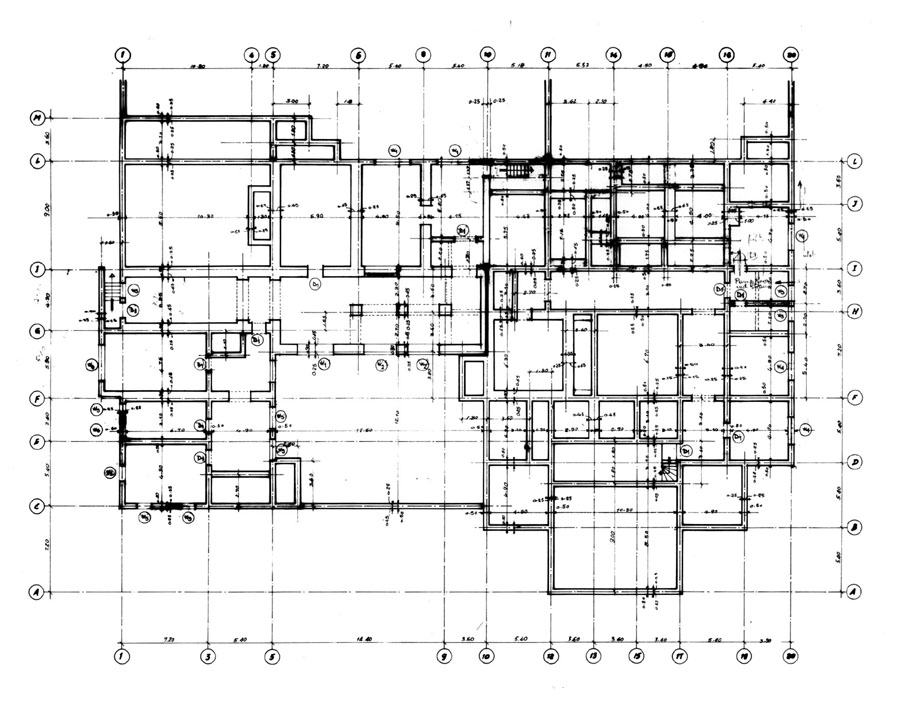Full plans application
The Building Regulations set out what qualifies as ‘building work’ and so falls under the control of the regulations, the notification procedures that must be followed when starting, carrying out, and completing building work, and requirements for specific aspects of building design and construction. Building Regulations approvals can be sought either from the building control department of the local authority or from an approved inspector.
There are two possible routes for obtaining building regulations approval:
- Generally, on larger new-build projects, a 'full plans' application will be made, meaning that full details of the proposed building works are submitted for approval before the works are carried out.
- On small projects, or when changes are made to an existing building, approval may be sought by giving a 'building notice'. In this case, a building inspector will approve the works as they are carried out by a process of inspection.
When submitting a full plans application, a completed application form should be included along with the appropriate charge that is required. A location plan or block plan (to scale 1:1,250) is required if the project is a new building or extension. In addition, two copies of the plans, with floor plans, elevations and sections (to scale no less than 1:100) should be included. These may need to ba accompanied by supporting calculations such as structural calculations.
On receiving the application, the local authority will check the plans and, if appropriate, consult other relevant authorities, e.g. fire, sewerage, health, etc. They must issue a decision within five weeks or a maximum of two months from the date of deposit (if an extension is agreed by the applicant). NB: Where demolition work is proposed, the owner must give the local authority building control department six weeks’ notice under Section 80 of the Building Act.
If the submitted plans are deemed to comply with the building regulations, then a notice will be issued stating that they have been approved. Alternatively, applicants may be requested to make amendments or provide further details. A conditional approval might also be issued which requests further plans to be submitted or modifications to be made before approval can be formally given. If the application is rejected then the reasons will be stated in the notice.
In the event of disagreement about an approval, a ‘determination’ can be sought (before the works start) from the Secretary of State for Communities and Local Government or from Welsh Ministers in the Welsh Assembly Government. It is also possible to seek relaxation or dispensation of the regulations from the building control department of the local authority under certain circumstances (see Department for Communities and Local Government guidance).
Full plans approvals are also subject to inspection during the course of the works at stages decided by the local authority (typically during the construction of foundations, damp proof courses and drains and perhaps other key stages), but as long as the work is carried out in accordance with the approved design, the risk of problems is very much reduced compared to a building notice application.
A full plans approval notice is valid for three years from the date of deposit of the plans. This can be very important given the speed at which the regulations change, meaning that a building which has been approved, but not built may require re-design and further approval if construction is delayed and the regulations change. If the three years expires without building work commencing, the local authority may send a notice to declare that the approval is ‘of no effect’, i.e. is no longer valid.
Failure to comply with the Building Regulations can result in a fine and/or an enforcement notice requiring rectification of the works. There is also a regularisation process for getting approval for works that have been carried out without approval.
[edit] Related articles on Designing Buildings Wiki
Featured articles and news
RTPI leader to become new CIOB Chief Executive Officer
Dr Victoria Hills MRTPI, FICE to take over after Caroline Gumble’s departure.
Social and affordable housing, a long term plan for delivery
The “Delivering a Decade of Renewal for Social and Affordable Housing” strategy sets out future path.
A change to adoptive architecture
Effects of global weather warming on architectural detailing, material choice and human interaction.
The proposed publicly owned and backed subsidiary of Homes England, to facilitate new homes.
How big is the problem and what can we do to mitigate the effects?
Overheating guidance and tools for building designers
A number of cool guides to help with the heat.
The UK's Modern Industrial Strategy: A 10 year plan
Previous consultation criticism, current key elements and general support with some persisting reservations.
Building Safety Regulator reforms
New roles, new staff and a new fast track service pave the way for a single construction regulator.
Architectural Technologist CPDs and Communications
CIAT CPD… and how you can do it!
Cooling centres and cool spaces
Managing extreme heat in cities by directing the public to places for heat stress relief and water sources.
Winter gardens: A brief history and warm variations
Extending the season with glass in different forms and terms.
Restoring Great Yarmouth's Winter Gardens
Transforming one of the least sustainable constructions imaginable.
Construction Skills Mission Board launch sector drive
Newly formed government and industry collaboration set strategy for recruiting an additional 100,000 construction workers a year.
New Architects Code comes into effect in September 2025
ARB Architects Code of Conduct and Practice available with ongoing consultation regarding guidance.
Welsh Skills Body (Medr) launches ambitious plan
The new skills body brings together funding and regulation of tertiary education and research for the devolved nation.
Paul Gandy FCIOB announced as next CIOB President
Former Tilbury Douglas CEO takes helm.
UK Infrastructure: A 10 Year Strategy. In brief with reactions
With the National Infrastructure and Service Transformation Authority (NISTA).























